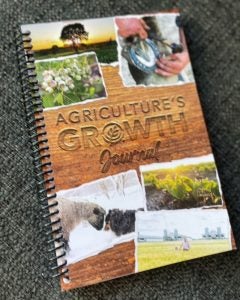Changing contracts. Increasing input costs. Weather. Working with family. Paperwork. Your brother in-law. The list of stressors on a farm is long. Unfortunately, most of them are chronic.
Consider chronic mastitis. Left untreated, a cow’s infected quarter can atrophy. Did you know that your brain does the same when you’re under chronic stress? Believe it or not, science shows the ongoing cortisol resulting from chronic stress can result in a smaller brain. Humans who don’t work to address chronic stressors are also more likely to deal with anxiety, depression, and suicidal thoughts.
What can you do to deal with the stress they bring? Few farmers take the time to develop an environment to help the brain cope with the overload of stress that is part of your business. Your self-care deserves the same attention as your land and animals; my hope is that this article will give you some ideas to deal with stress and put yourself in the best environment.

It’s essential to build a practice of gratitude proactively, before the big stress hits the fan. Gratitude is an important way to build resiliency. Gratitude brings joy and goes well beyond thankfulness. And while people most often think about it during times like Thanksgiving or Christmas, gratitude is not about a holiday — but about creating a positive environment to help yourself throughout the year.
“It’s not joy that makes us grateful, it’s gratitude that makes us joyful,” said Benedictine monk David Steindl-Rast. He recommends we find a way to sustain the feelings of Thanksgiving year-round. This TedX speaker calls for us to live gratefully, rather than feeling gratitude randomly. In other words, how can you make the feelings of the holidays last year-found?
“We have to build stop signs into our lives.” He compares his recommended method to what we learned as children about crossing the street: “Stop, look, go.” Interrupt your rapid pace, whether walking cows, milking, going over business plans, chopping silage, or training employees. Stop — that means your thoughts, your phone checking, your worrying. Look — pay attention to what is happening around you. Go — feel a sense of gratitude.
Some days you may be grateful for the combine or skidloader working, other days you may be moved by the chance to feed the world or leading a great team. The point is to develop a practice of gratitude — both to bring you joy daily and to build resiliency for when stress escalates at a later time. Actively practice stopping, paying attention to what is happening in your life, and finding something to give thanks for. Live gratefully. Studies show you’ll experience improved sleep, relationships, and decision making.
Like all practices in your business, there are different approaches to employing gratitude to help with long-term chronic stress management.
Terry Lawton from Massachusetts and Joanna Lidback from Vermont are dairy farmers who keep a gratitude list.
“Even if it feels like there is nothing to be grateful for, there is usually electricity, hot water, shower, and a bed,” Lawton notes.
Lidback adds, “I don’t add to it daily, but when I am feeling really overwhelmed, I stop and add at least one thing to it, and sometime read the other things I’ve written.”

Need more? Here are some habits and ideas to consider cultivating.
- Writing a list of questions as prompts to remind you about a grateful life, e.g. what stop signs can you build into your day to promote gratitude?
- Posting photos with your daily or weekly thanksgiving on social media. One of my speaking colleagues does this daily on Facebook and adds humor. It’s a great reminder for others to find laughter and gratitude.
- Giving thanks with family at meals through grace, a standard question asked of each family member daily, or talking about high/low points of each day.
- Emailing yourself moments of gratitude because you type faster than you write.
- Asking employees to identify points of gratitude in a meeting, on a bulletin board, or through the company newsletter. A positive mindset is contagious.
- Finding apps to send daily reminders, questions, etc.
- Meditating or studying related verses in scripture and finding one you can keep in your pocket or office as a reminder.
- Creating a virtual community group focused on gratitude for accountability and idea sharing.
Stress management is an essential business skill in 2022; statistics clearly show agriculture needs to do a better job with mental wellness. Practicing gratitude is an approachable way to deal with the chronic stress plaguing our business — and it can be cultivated over time.
Stress happens — you’re not likely to avoid it. How can you better prepare for chronic stress through cultivating gratitude? What you put into your brain will eventually come back out; research shows that gratitude has a positive effect on other brain behaviors. In turn, that positively influences those you work with daily do the same.
Where can you “stop, look, and live gratefully” in your business and family life to manage your chronic stress? Today is a great day to start.
Michele Payn created Agriculture’s Growth Journal, filled with 50 stress management tips and tricks for farmers, veterinarians, and those who support them. She is an author, Certified Speaking Professional, and Holstein breeder based in west central Indiana. Learn more at causematters.com/growthjournal or follow @mpaynspeaker on social media.


